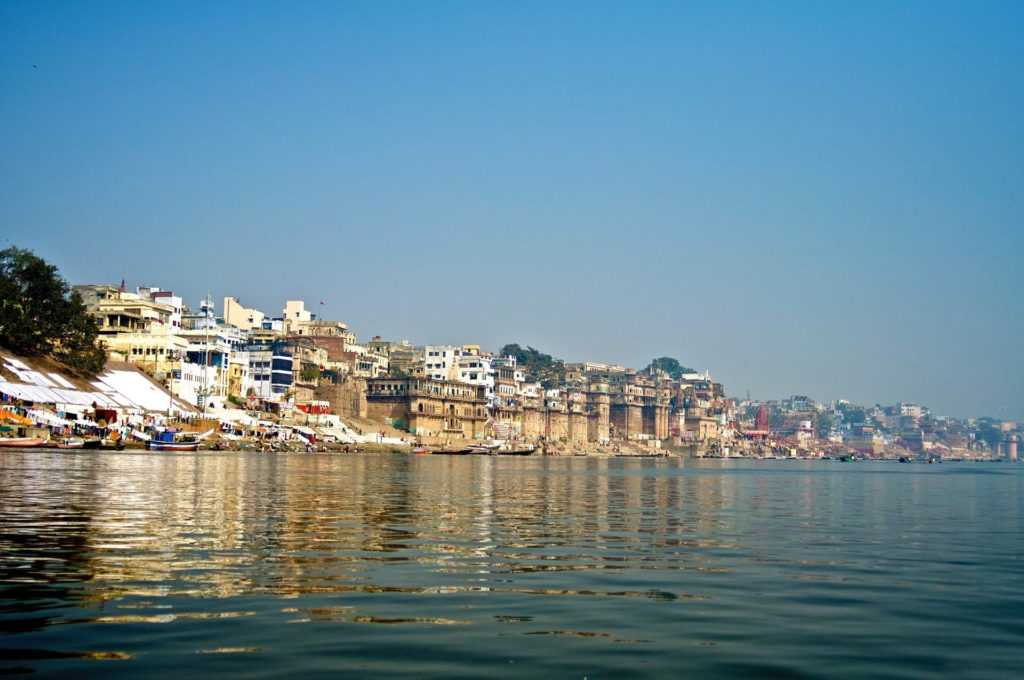Revisiting the environmental effects of Corona
By Jagdish Verma
In the fast life of the 21st century, raging and concerning levels of pollution have become normal for us. Contemporary life has become so fast that even health hazards weren’t able to stop us, although a government issued lockdown during a global pandemic might.
During this period of lockdown when most of the activities whether industrial, transport and routine activities in the market and domestic level are least active. Many of us can generalize this as a significant improvement in the levels of many variables of pollution.
Several images from across the world gave the humankind a glimpse of how pristine and harmonious mother nature can be. There were sightings of snow-capped Gangotri peaks reported from Sahranpur, as the Air Quality Index (AQI) in the western UP town dipped below 50.
The aerial distance of the peaks from the town is approximately 200 kms and it was claimed that this has happened for the first time in 30 years. Similarly, Jalandhar, Siliguri and other Indian towns also reported sighting of mighty Himalayas, as the air condition got better across the country.
Holier rivers
Due to the halt in disposal of wastes into rivers from Industries and other commercial, religious activities, the quality of river water has significantly improved.

The water quality of river Ganga at Har-kiPauri in the holy city of Haridwar was classified as ‘fit for drinking’. Crores of money pumped into several schemes of clean Ganga couldn’t achieve what lockdown could achieve within a month
In terms of observation these parameters are color, suspended solids, odor, turbidity, dissolved oxygen etc. Dissolved oxygen can be observed through comparatively easy water movement due to its light weight and clarity.
Several industrial units in the Delhi-NCR were closed during the lockdown, due to which discharge of the toxic wastes and effluents in the Yamuna river had completely stopped. The water of Yamuna river was reported to be much clearer at several places.
As per the standards for river the total coliform has to be less than or equal to 50 and dissolved oxygen more than or equal to 6 mg/l for the best of its class (Class A).
Hence in terms of water quality life become easy. When water become clear there comes life in fauna such as fish, birds etc which are interdependent.

In terms of quality parameters that improved are Dissolved Oxygen (from less than 8 mg/l to more than 10 mg/l), visibility in river (from few inches to several feet), Odor (from pungent to fishy or no odor) as reported from some pollution control board and institutes.
In one of the most exciting news for the environmentalists and activists, the water quality of river Ganga at Har-ki-Pauri in the holy city of Haridwar was classified as ‘fit for drinking’.
Crores of money pumped into several schemes of clean Ganga couldn’t achieve what lockdown could achieve within a month. According to the Uttarakhand Environment Protection and Pollution Board, there was a 34 per cent reduction in faecal coliform and 20 per cent in biochemical oxygen demand in Haridwar. Such a remarkable improvement has not been witnessed in last 30-40 years.
Seeing the unseen
Due to the stopping of Industrial, commercial and transport activities the quality of air also became to the level of harmless from the level of harmful. The air quality index for some of the stations in Delhi NCR observed and it was found that during December 2019 to May 2020 there is significant reduction of percentage of days in the harmful range.
During the quarter of December 2019 to February 2020 when 60-80% days were in harmful level (Air Quality Index from 200 to 500) to almost moderate to safe level (Air Quality Index less than 200) in the next quarter of March 2020 to May 2020 in terms of PM 2.5.

There is a large improvement in air quality, especially in urban areas — from alarming or poor to satisfactory or good. In the urban areas, half of the air pollution is attributed to the vehicular emissions, which saw a drastic reduction during the lockdown period.
According to two studies, published in the journal Geophysical Research Letters in May, the levels of two major air pollutants, including nitrogen dioxide, drastically reduced since lockdowns were enforced worldwide in response to the COVID-19 pandemic.
Scientists are also of the opinion that lockdown would have resulted in the gradual repair of the ozone layer, which is otherwise a very slow process
In India, satellite data has shown a significant drop in particulate matter or aerosol levels after the COVID-19 lockdown over most parts of the country.
When the improved air quality is combined with the Ecology(quality of Environment parameters in terms of habitat both flora and fauna) then there is additional improvement.
Not only the air becomes clean but also its habitat life and ecological quality. It reminded us that something was wrong in the past which is right in the present.
Earlier instead of listening the sounds of flora and fauna there was mainly a disturbing sound which is called noise. Noise levels are said to be reduced from the extent of 50 to 70% and at some places the value is reduced from 120 dB(A) to 50 dB(A).
However in residential areas this value is observed to be less than 40 dB(A) as sounds of birds can be observed so clearly only if the background noise is less and also if the birds come in the close vicinity.
This is obvious as previous to this period these kinds of bird sound can be observed only in forest areas or green zone. These bird sound are ranging from 40 dB(A) to 60 dB(A) as per some anthropologists and institutes.
It is also a probability that due to reduction in green house gases together with fog and fumes the quality of outer layer of atmosphere may also have improved and due which sunshine quality.
The visibility is improved significantly as we could observe the presence of more distant objects from the rooftop horizon. Scientists are also of the opinion that lockdown would have resulted in the gradual repair of the ozone layer, which is otherwise a very slow process.
Large reduction in air-traffic resulted in a significant reduction in particulate matter and greenhouse gas emissions in the upper atmosphere, some of which are already shown to impact the stratospheric ozone layer through self-lofting of these pollutants emitted by airplanes.
Inside out or outside in
Even though a lot has changed in our environment for the good, a discerning look at the household level would point out to some cautionary observations.
The change in habits due to the pandemic has made people use much more chemicals than ever. Use of alcohol based sanitisers have increased drastically across the board.
Use of different kinds of disinfectants like phenyl, Dettol, etc have gathered an unprecedented momentum, as people are drifting towards maintain hygiene inside their homes.

When the fear from the pandemic is over then all these observations of natural goodness and improvement of ecology shall become observations of decrease in the quality of ecology
More and more soaps and detergents are being used for frequent washing and cleaning. In fact, along with our bodies and clothes and utensils, soaps and detergents have found a new target in the household groceries which are purchased from outside.
Although hygiene level and sanitation is improved but somehow indoor air quality and water/ waste disposal quality is reduced. It can be taken care by precautionary measures and careful observation so as to avoid overuse of chemicals and other materials to keep these at safe level and save water, maintain indoor air quality and ventilation.
Sustainable healing
When the pandemic is over or rather the fear from the pandemic is over, it will be interesting to see whether these welcome environmental changes due to lockdown would sustain or not However, there are many lessons from the lockdown which we as humankind must keep revisiting for our own good.
One of the most essential habits would be around proper eating. Lockdown had forced people to stop eating junk food outside and cook their own meals.
Hopefully, many folks would have realised the benefits of healthy cooking and eating. The forced lockdown has also enabled the human race to see the pristine beauty of the nature.
Clear skies, blue water, rejuvenation of the flora and fauna – these had become a rarity over the years. There is a stark realisation that human consumption has destroyed the nature beyond recognition.
However, given a chance, nature has its own mechanism to bounce back and bare its magic for all. Even though the lockdown has been lifted, there is a hope that the environmental benefits of the lockdown perpetuate to a large extent.
